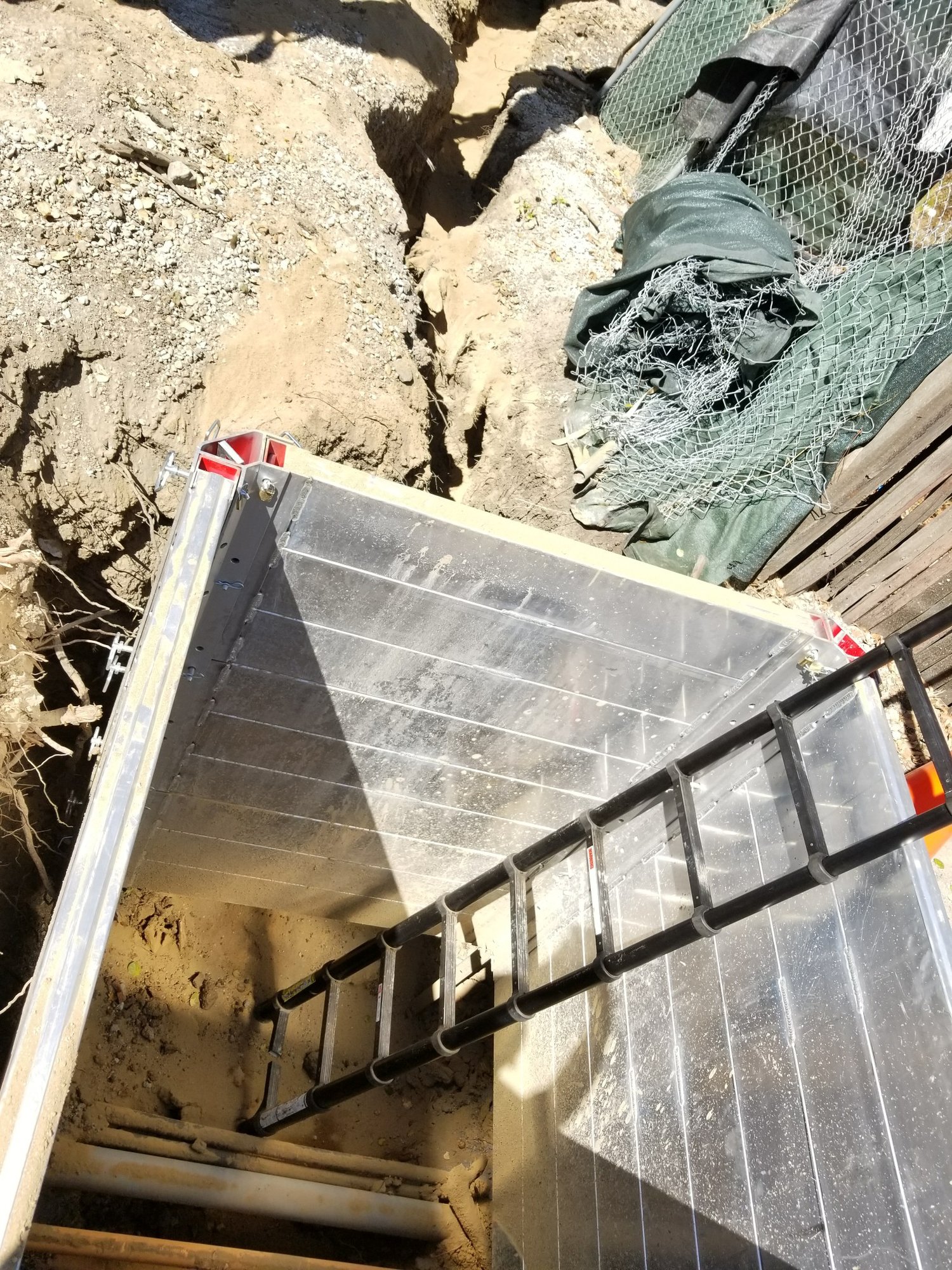OSHA SHORING CERTIFIED
We Are Osha Certified
Certain activities or safety procedures at a construction site require design, inspection or supervision by a competent person. The OSHA Construction Standard defines a competent person as someone who is:
capable of identifying existing and predictable hazards in the surroundings, or
working conditions which are unsanitary, hazardous, or dangerous to employees, and
who has authorization to take prompt corrective measures to eliminate them.
35Ft Deep Slide Rail Shoring System Half Moon Bay, Ca
PG&E 8" High Pressure Main 53" deep High Risk Shoring Needed
Basement Backfill San Carlos, Ca.
Los Gatos Street Sewer Shoring 11Ft deep
Trenching and excavation work is dependent on these specialized employees because its highly technical nature, as well as its inherent hazards, require a greater level of training and experience than a normal worker would possess. The items below specify the trenching and excavation activities where a competent person is necessary. At Core we are OSHA certified for Deep excavation we have project experience shoring 35ft deep between structures, excavation in complex situations. We can handle your projects as a General Engineering Contractor, Hazmat Contractor, and General Building Contractors to also over see a large scope of work.
Protective Systems or Equipment
Monitoring water removal equipment and operations. [29 CFR 1926.651(h)(2)]
Inspecting excavations subject to runoff from heavy rains to determine need for diversion ditches, dikes, or other suitable protection. [29 CFR 1926.651(h)(3)]
Determining cave-in potential to assess need for shoring or other protective system. [29 CFR 1926.652(a)(1)]
Examining damaged material or equipment used for protective systems to determine its suitability for continued use. [29 CFR 1926.652(d)(3)]
Classifying soil and rock deposits, by both visual analysis and by testing, to determine appropriate protection; re-classifying, if necessary, based on changing conditions. [29 CFR 1926 Subpart P Appendix A]
Determining the appropriate slope of an excavation to prevent collapse due to surcharge loads from stored material or equipment, operating equipment, adjacent structures, or traffic, and assuring that such slope is achieved. [29 CFR 1926 Subpart P Appendix B (c)(3)(iii)]
Inspecting Trench and Protective Systems
Authorizing immediate removal of employees from the hazardous area where evidence of possible cave-in, failure of protective systems, hazardous atmospheres, or other hazardous conditions exists. [29 CFR 1926.651(k)(2)]
Saratoga, Ca OSHA Sloping Basement Excavation
Unsafe Access/Egress
Designing structural ramps that are used solely by employees as a means of access or egress. Structural ramps used for access or egress of equipment must be designed by a competent person qualified in structural design. [29 CFR 1926.651(c)(1)(i)]











